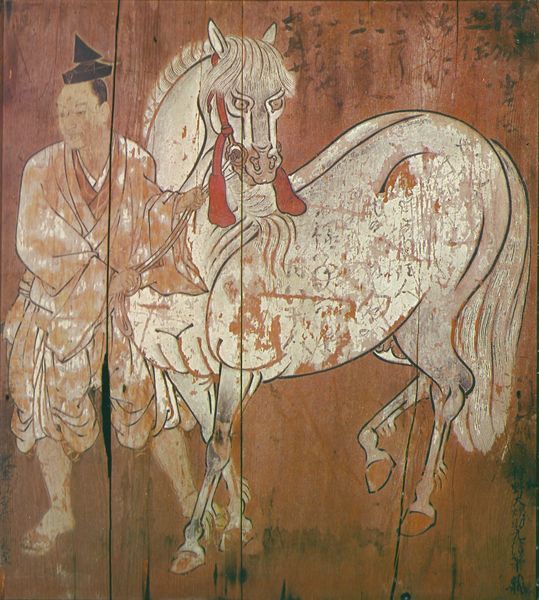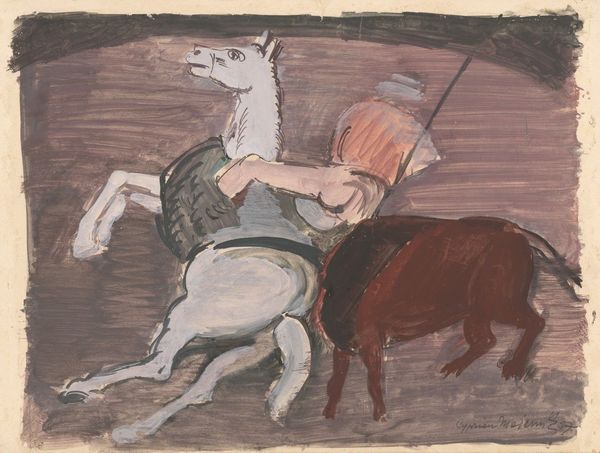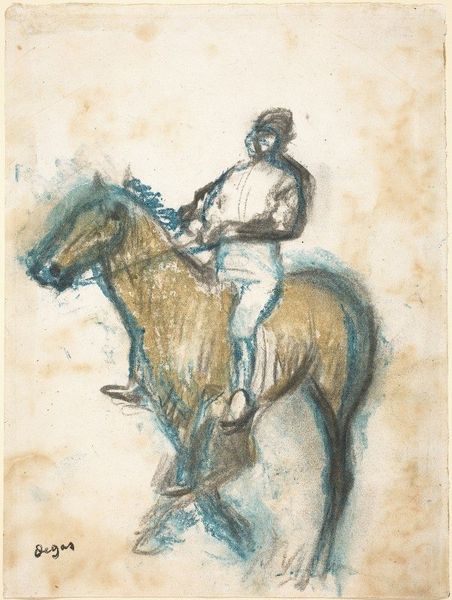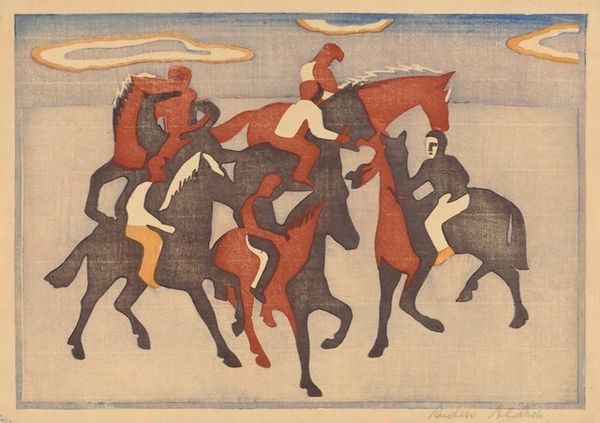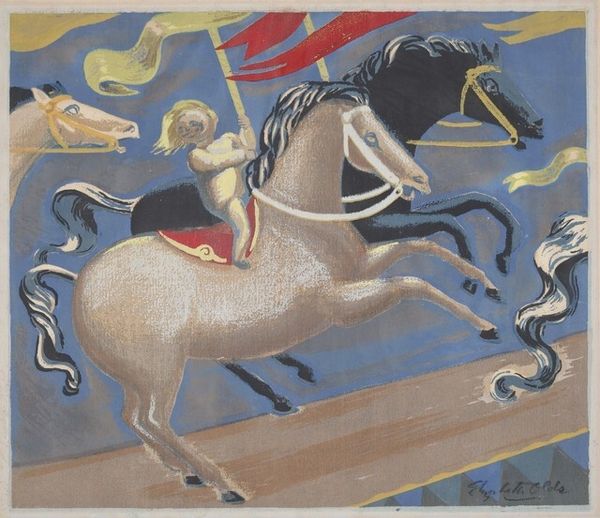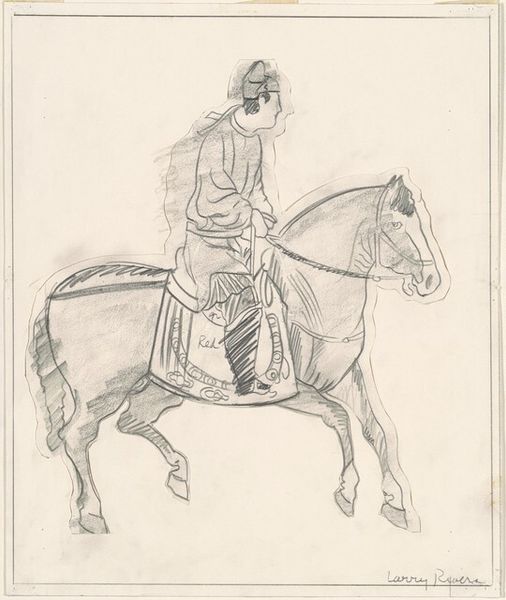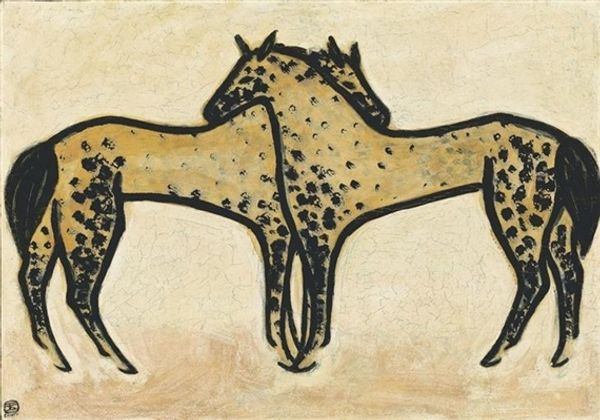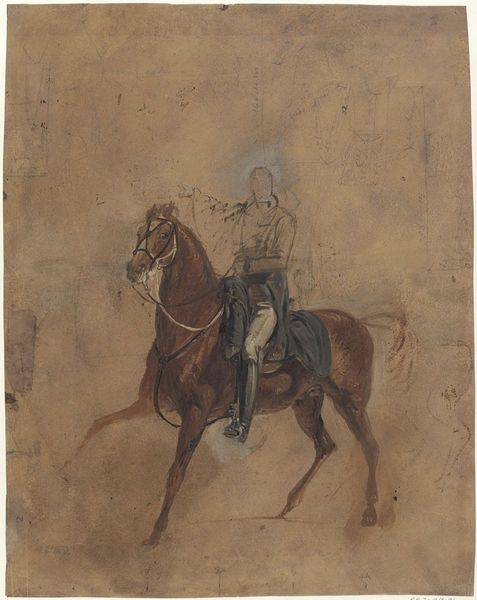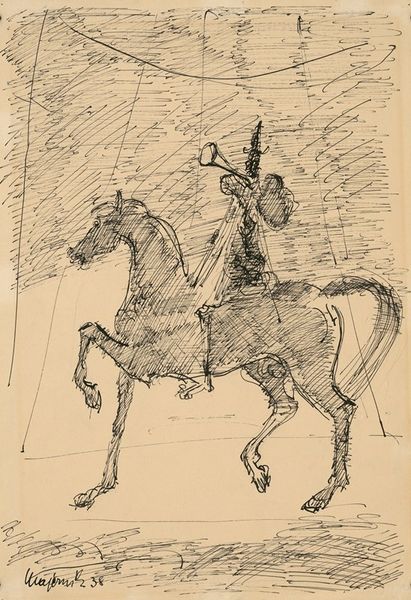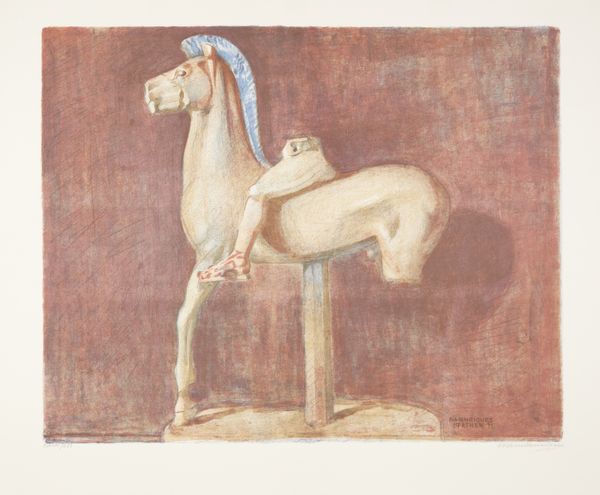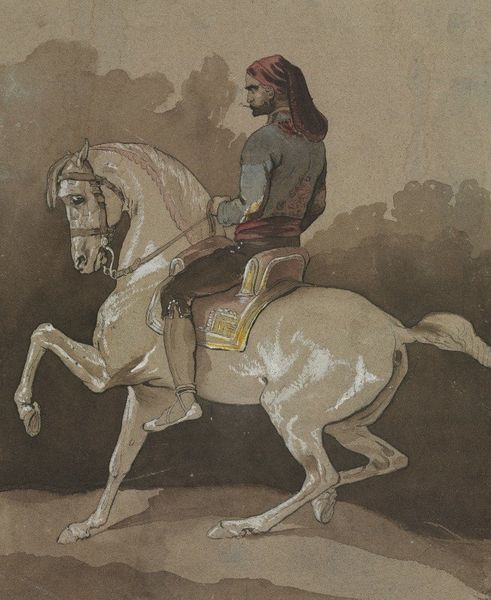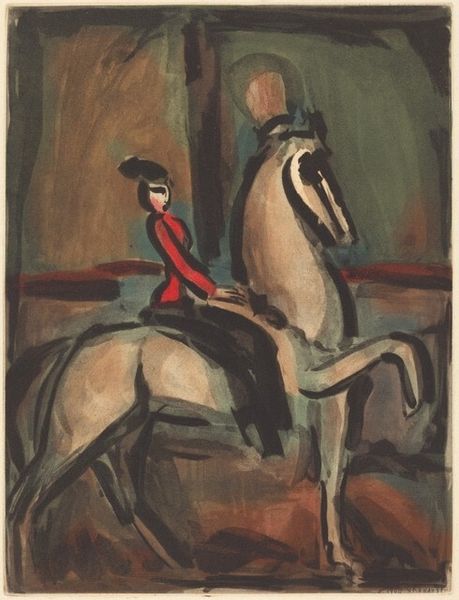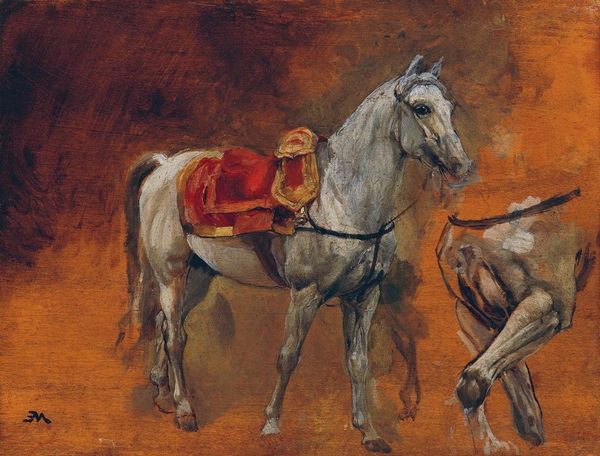
Dimensions: 60 x 79 cm
Copyright: Public domain US
Editor: This is "A Horsewoman" by Pablo Picasso, drawn in 1905. The piece is done in pencil and colored pencil, and the tones are quite muted. It evokes a feeling of nostalgia or a scene from a distant, possibly romanticized, past. What interpretations do you have of this drawing? Curator: It's interesting how you describe the feeling of nostalgia. This piece, though seemingly straightforward, sits at a crucial intersection of social commentary and artistic expression within Picasso's early period. What stands out to you about the figure of the horsewoman herself? Editor: Well, she seems almost androgynous, which is surprising for the time. She’s holding what appears to be a bow or maybe a thin sword and isn't traditionally feminine. Curator: Exactly! Consider the social context of 1905. The early 20th century was a time of evolving ideas about gender and societal roles. Do you see Picasso engaging with, or perhaps even challenging, traditional representations of women? Editor: It feels like a subtle rebellion against the hyper-feminine ideals that were expected then. Placing her on a horse gives her power and agency, right? Curator: Precisely. The act of depicting a woman on horseback, wielding a weapon, immediately disrupts traditional power dynamics within art history. Consider also the landscape... How does it contribute to your reading of the artwork? Editor: It feels almost barren or incomplete, highlighting the figure and her agency within this space, rather than defining her through it. It shifts the focus entirely onto her individuality. Curator: And isn't that the essence of challenging conventions? It moves beyond the superficial towards asserting the individual’s narrative against prevailing norms. Reflecting on it, do you think this understanding changes your initial sense of "nostalgia" at all? Editor: Absolutely. It makes it less about a longing for the past and more about questioning the present and future possibilities for women in society, a powerful reinterpretation. Curator: Indeed. Art often acts as both a mirror and a catalyst for societal change. I find it deeply rewarding to look at artworks in this manner.
Comments
No comments
Be the first to comment and join the conversation on the ultimate creative platform.
